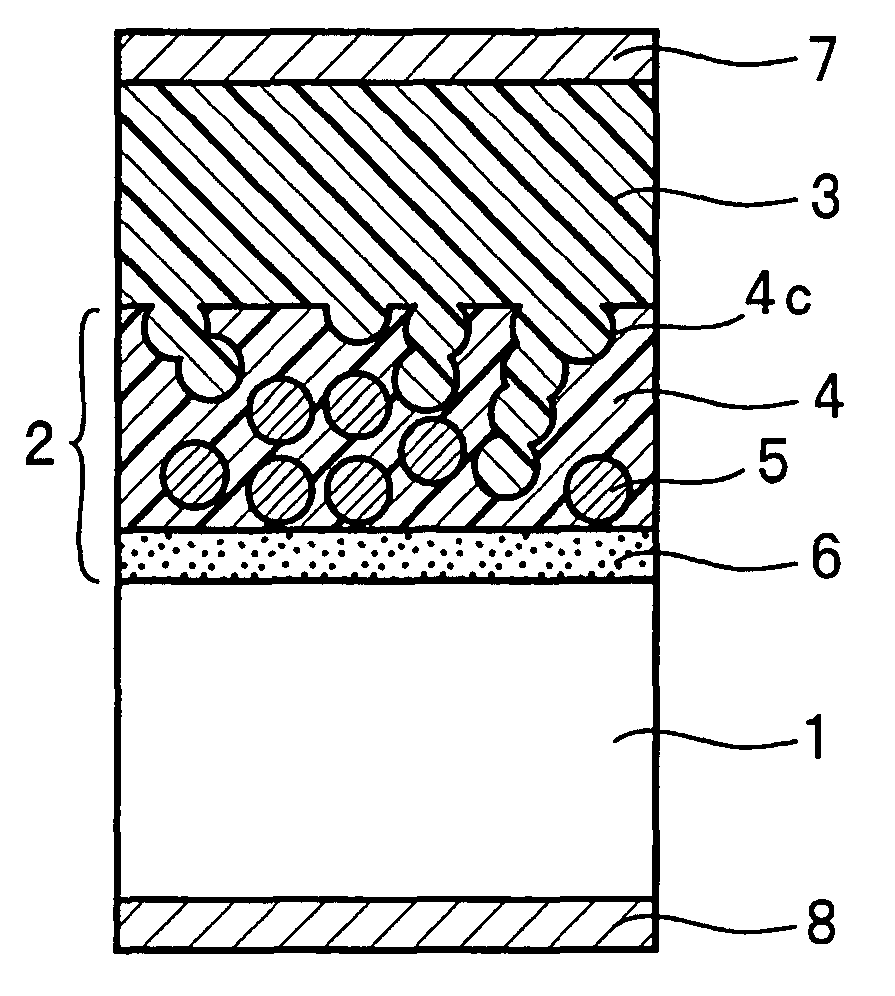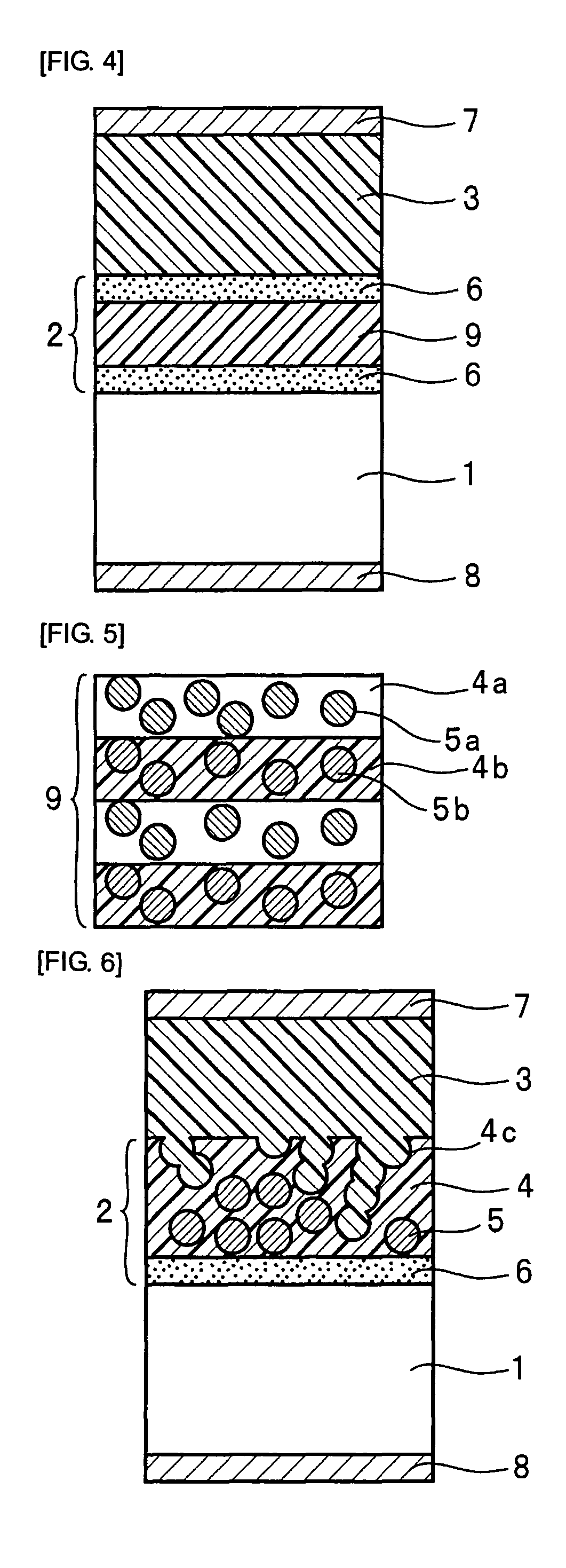Laminated optical element
a technology glass, which is applied in the field of laminated optical elements, can solve the problems of high production high heat resistance of expensive molding dies, and high cost of glass optical elements, and achieves high hardness, good adhesion, and high reliability.
- Summary
- Abstract
- Description
- Claims
- Application Information
AI Technical Summary
Benefits of technology
Problems solved by technology
Method used
Image
Examples
example 1
[0209]
[0210]A hybrid aspherical lens was produced through the steps shown in FIGS. 11(a) to 11(e).
[0211]As shown in FIG. 11(a), a spherical lens made of glass was used as an optical substrate 1, and an intermediate layer 2 was formed on the optical substrate 1. Onto the intermediate layer 2, the optical resin layer-forming solution 3 was dropped. As the optical substrate 1, a high refractive index spherical glass lens having a diameter of 5 mm and a maximum thickness of 1 mm (refractive index of glass nD: about 1.8) was used. The intermediate layer 2 was formed by heating the silicon oxide particle dispersion liquid spin-coated on the optical substrate 1 at 100° C. for 1 hour.
[0212]As shown in FIG. 11(b), a nickel mold 10 having an aspherical inner surface was pressed against the optical resin layer-forming solution 3, and then, as shown in FIG. 11(c), the optical resin layer-forming solution 3 was cured by irradiation with ultraviolet rays from the optical substrate 1 side to form ...
example 2
[0217]As shown in FIG. 2, a hybrid aspherical lens was produced in the same manner as in the Example 1 except that the intermediate layer 2 was replaced with one comprising a coupling agent layer 6 provided on the optical substrate 1 and a matrix resin layer 4, containing silicon oxide particles 5 dispersed therein, provided on the coupling agent layer 6.
[0218]The coupling agent layer 6 was formed by heating the coupling agent solution 3 spin-coated on the optical substrate 1 at 140° C. for 1 hour. The thickness of the coupling agent layer 6 is 10 nm. The matrix resin layer 4 was formed in the same manner as in the Example 1. The maximum thickness of the matrix resin layer 4 is 200 nm.
[0219]Therefore, the thickness of the intermediate layer 2 of Example 2 is 210 nm.
example 3
[0220]In this example, niobium oxide particles were used as microparticles 5. More specifically, a hybrid aspherical lens was produced in the same manner as in the Example 2 except that the matrix resin layer 4 was replaced with one formed using the niobium oxide particle dispersion liquid containing niobium oxide particles as microparticles 5.
PUM
| Property | Measurement | Unit |
|---|---|---|
| particle size | aaaaa | aaaaa |
| thickness | aaaaa | aaaaa |
| humidity | aaaaa | aaaaa |
Abstract
Description
Claims
Application Information
 Login to View More
Login to View More - R&D
- Intellectual Property
- Life Sciences
- Materials
- Tech Scout
- Unparalleled Data Quality
- Higher Quality Content
- 60% Fewer Hallucinations
Browse by: Latest US Patents, China's latest patents, Technical Efficacy Thesaurus, Application Domain, Technology Topic, Popular Technical Reports.
© 2025 PatSnap. All rights reserved.Legal|Privacy policy|Modern Slavery Act Transparency Statement|Sitemap|About US| Contact US: help@patsnap.com



